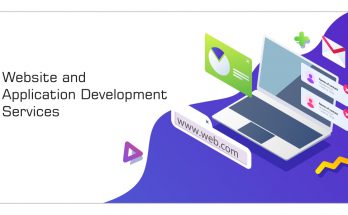
Web design is a process that requires the wide array of skills and disciplines. A web page design
practically involves many standards and rendering procedures like HTML, CSS, SVG, APIs customization,
and some more technologies based on the requirement. Similarly, every web design project includes
graphic design, authoring, interface design, standardized coding, UX design, proprietary software, and
the search engine optimization. Very often design process is carried out as a team and independently
based upon the requirement and magnitude of the work. Web design very often termed as front-end
design for the web presence. Web development and web engineering often work hand in hand with this
design process basing upon the task. Let us see some of the salient aspects of this web design one by
one below:
HTML and CSS : The very fundamental design used in every web design process is HTML and CSS. Here,
HTML or XML is used for the structure while CSS caters well for the style and the layout of the website.
JavaScript: Javascript and web APIs are utilized in the web design process to make pages and content
dynamic for the visitors. Interactive features of wide varieties are enabled on any web page using
scripting.
Graphics: It is very often graphics that make website or WebPages more appealing for the users. For
this purpose, the web design process uses W3C, SVG Vector format, Canvas API, Web CGM for the
graphics effective format usage.
Video and Audio: Visual and audible content is also often part and parcel of web design. Some of the
W3C formats will be helpful for the designer to enable authoring video and audio presentations on the
web page. Timed text format in W3C works for captioning as well as for your other applications in the
design process.
Accessibility: WAI or Web Accessibility Initiative in W3C helps the designer to publish content on web
pages according to the WCAG that is Web Content Accessibility Guidelines. Also, WAI-ARIA here comes
with extra tools in it for creating accessible web applications with the provision for additional semantics
over widgets and their behaviour.
Internationalization: W3C arranges design technology that can work successfully across different
languages and cultures. HTML and XML are the W3C standards those are built successfully on Unicode
for this purpose. This W3C published certain guidance for the authors related to the language tags, bid
(bi-directional) text and many more.
Mobile Web: W3C is currently promoting “One Web” solution that means availability of the website
on any of the device. Here, Mobile Web Practices from W3C provides ample help for the designers in the
creation of the web page that can offer good experience similarly on the wide varieties of the devices,
locations and contexts.
Privacy: Enabling suitable privacy is part and parcel of the design process too. It is the responsibility
of the web designer to consider needed security and privacy implications without fail on the web and it
is called technology design.
Math: W3C comes with MathML, which enables saving of the mathematics those needed to be
served over the web page. This comes with received and processed mechanism in it.
Above are few of the effective web design techniques are involved in the website design process. In fact,
every design process evolves basing up on the exact requirement, where usage of technologies and
practices will vary to a certain extent.


Spot on with this write-up, I absolutely believe this website needs
a great deal more attention. I’ll probably be back again to read through more,
thanks for the info!
This is really interesting, You are a very skilled blogger.
I’ve joined your feed and look forward to seeking more of your magnificent post.
Also, I’ve shared your site in my social networks!